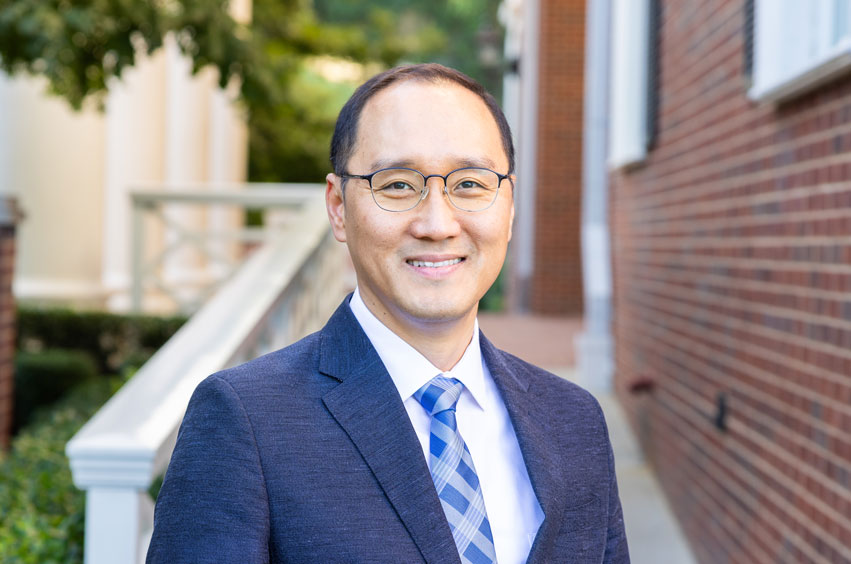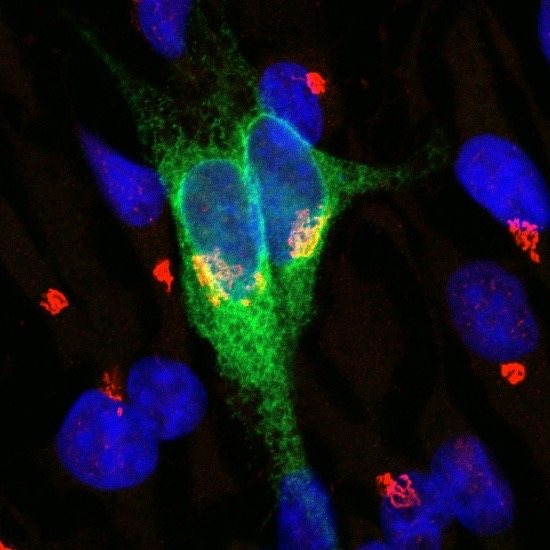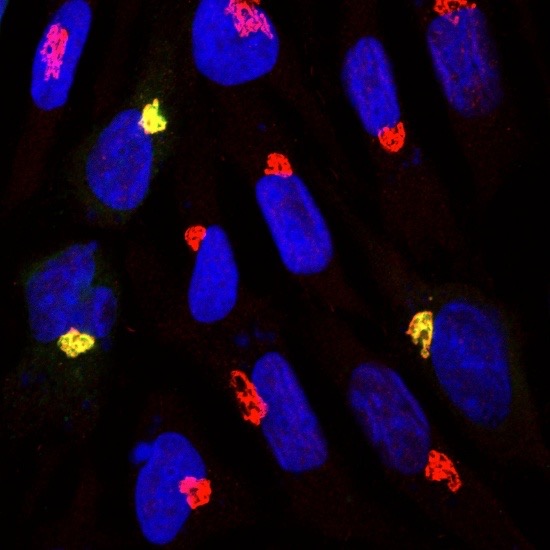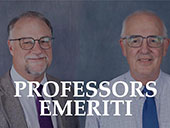From Setback to Breakthrough: A DBU Professor's Research Journey

A breakthrough study conducted at UT Southwestern Medical Center and led by Dr. Dongjae Jun, biology professor at Dallas Baptist University, has identified a new treatment strategy for Schnyder Corneal Dystrophy (SCD), a rare eye disease in which cholesterol accumulates in the cornea and clouds vision.
Published this year in the Proceedings of the National Academy of Sciences (PNAS), the study titled "Allosteric regulation of UBIAD1 trafficking from ER to Golgi revealed by chemical genetic screening" highlights the collaborative work of Dr. Jun and fellow researchers on the subject, which could provide a potential noninvasive treatment strategy for SCD.
Dr. Jun began his research journey in 2009 during his postdoctoral fellowship at UT Southwestern Medical Center. Initially, his focus was not on UBIAD1. His first project aimed to identify genes that control the stability of HMG-CoA reductase (HMGCR), a key enzyme in cholesterol synthesis. However, the initial screening did not yield the anticipated results, prompting a shift in direction.
Dr. Jun then turned to a second project aimed at identifying compounds that enhance ER-associated degradation of HMGCR. However, the rise of PCSK9 inhibitors—an emerging breakthrough in cholesterol-lowering therapies—rendered the project less relevant, cutting it short. Reflecting on that time, Dr. Jun shared, "Midway through my fellowship, I felt as though years of effort had evaporated, leaving me discouraged and nearly empty-handed."
He then shifted his focus to studying UBIAD1, the gene responsible for Schnyder Corneal Dystrophy (SCD)—a rare eye disease in which cholesterol accumulates in the cornea and clouds vision. "Subcellular-localization experiments had revealed a pivotal clue: every disease-associated mutants were trapped in the endoplasmic reticulum (ER), whereas the wild-type protein resided in the Golgi apparatus," Dr. Jun explained.
His hypothesis was simple, "If a small molecule could reroute mutant UBIAD1 from the ER back to the Golgi, we might be able to halt—or even reverse—the progression of SCD." He and his advisor had doubts, with Dr. Jun admitting, "I still questioned whether a small molecule could truly reroute a misfolded or mislocalized protein."
Rather than embarking on another "needle-in-a-haystack" high-throughput screening (HTS), he pivoted to a drug repurposing strategy, focusing on existing FDA-approved medications that have already been proven safe for patients. This strategy yielded promising results: a handful of small molecules completely rescued the mutant protein's proper localization.


"The next morning, my advisor told me he couldn't sleep after seeing the images," Dr. Jun recalled. "From that point on, the work quietly gathered momentum."
Dr. Jun manually verified each compound's effect on protein behavior so that they could capture subtle yet reliable outliers—work that ultimately revealed candidates they might otherwise have missed. "Every hit then had to be meticulously confirmed to ensure the compound was genuinely relocating the mutant from the ER to the Golgi, not merely causing aggregation or disrupting ER-Golgi trafficking," Dr. Jun recalled.
To confirm that rivoceranib directly binds to UBIAD1, facilitating its correct localization and enhancing degradation of HMG-CoA reductase (HMGCR), a key enzyme in cholesterol production, he collaborated with medicinal chemists. What began as a painstaking process ultimately became a "rewarding discovery." This discovery creates hope for patients with Schnyder Corneal Dystrophy (SCD), suggesting a potential non-invasive treatment option.
Dr. Jun explains, "While further studies and clinical trials are still needed to evaluate its therapeutic effectiveness for this specific condition, the fact that it has an established safety profile strengthens its potential as a future treatment option. It marks a promising step toward translating basic scientific insight into meaningful clinical application."
In addition to offering a potential treatment option for SCD, Dr. Jun's findings suggest that rivoceranib could enhance the cholesterol-lowering effects of statins, which are taken by over 200 million people worldwide. "While statins effectively suppress the enzymatic activity of HMGCR, they paradoxically stabilize the HMGCR protein itself, leading to its accumulation within cells. As a result, with long-term statin use, the increasing intracellular accumulation of HMGCR may eventually reduce the drug's efficacy at conventional doses", Dr. Jun explains. Riboceranib could possibly serve as a "statin adjuvant," enhancing the cholesterol-lowering effects of statins medications.
"Currently, rivoceranib is known as an anti-cancer agent that inhibits VEGFR2 expressed in tumor-associated endothelial cells, thereby suppressing angiogenesis. This study reveals an additional function of rivoceranib—namely, its ability to enhance ER-associated degradation (ERAD) of HMGCR via UBIAD1, leading to decreased cholesterol synthesis," Dr. Jun reveals.
Given that inhibiting cholesterol biosynthesis has long been recognized as a mechanism of cancer suppression, supported by statin research, the study's findings suggest that "rivoceranib may partly exert its anti-tumor effects by modulating cholesterol metabolism."
"Following the election of Dr. DeBose-Boyd, my advisor and corresponding author of the study, to the U.S. National Academy of Sciences (NAS), we decided that PNAS would be the ideal venue for sharing our work," Dr. Jun shares.
Now, with the project culminating in a patent filed in 2024 and a publication in PNAS this year, Dr. Jun feels a deep sense of fulfillment and closure. "I've come to hold onto a quiet but steady truth: if we keep seeking, answers do find their way to us," shares Dr. Jun.
Reflecting on his journey, Dr. Jun credits God, perseverance, and faith. His journey, in its own way, has echoed the words of Jesus: 'Seek, and you shall find.' "At times, it has felt as though God hides glimpses of truth—not to withhold them, but to draw us deeper into the search. The path has not been without struggle, but it has led to moments of wonder. And through it all, His provision has never once run dry."
Dallas Baptist University is a comprehensive Christ-centered university dedicated to producing servant leaders through the integration of faith and learning. With an enrollment of over 4,150 students, DBU's main campus is located in the foothills of southwest Dallas. DBU offers 79 undergraduate programs and 37 graduate degree programs in various fields, online college degree programs, and two doctoral programs. Get more information about Dallas Baptist University (www.dbu.edu) by browsing our website, emailing news@dbu.edu, or by calling (214) 333-5172.








